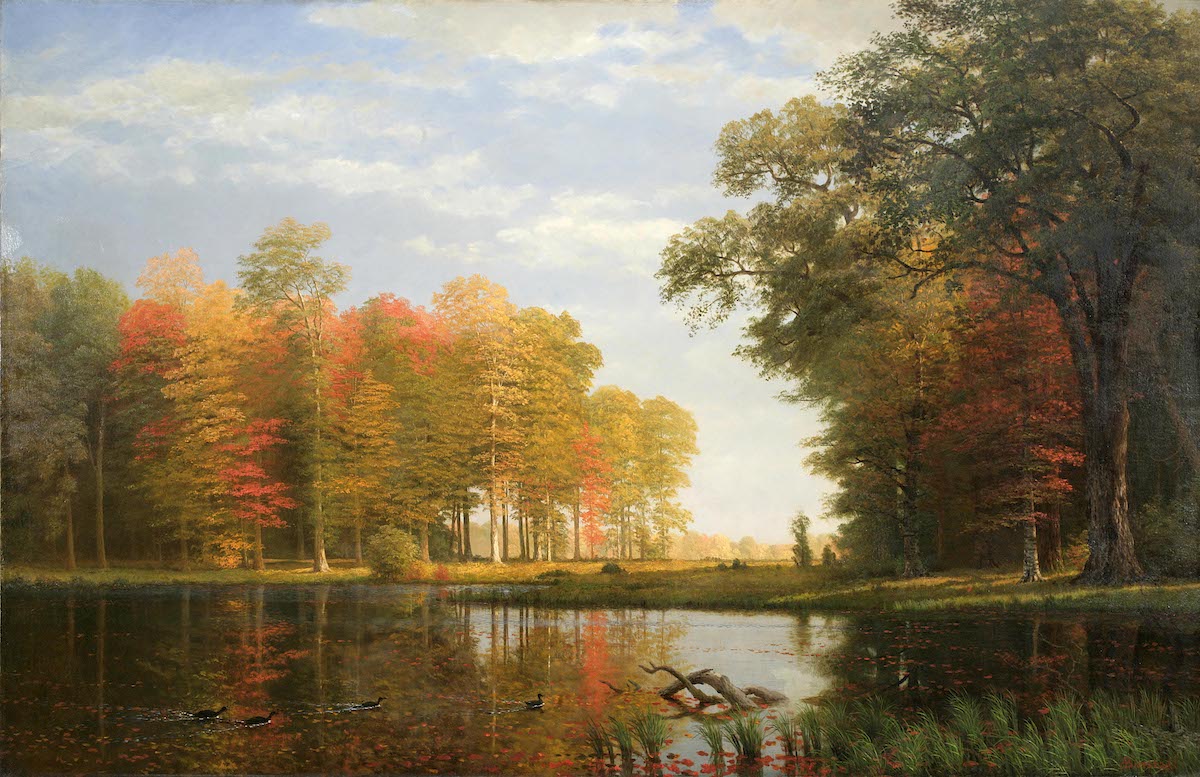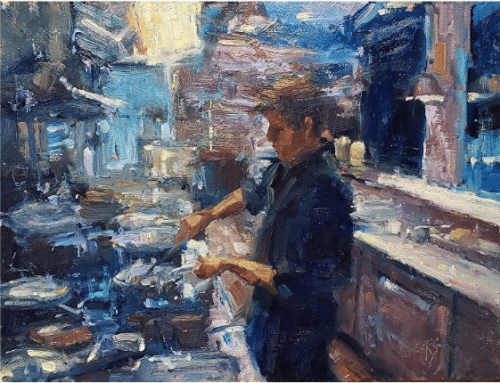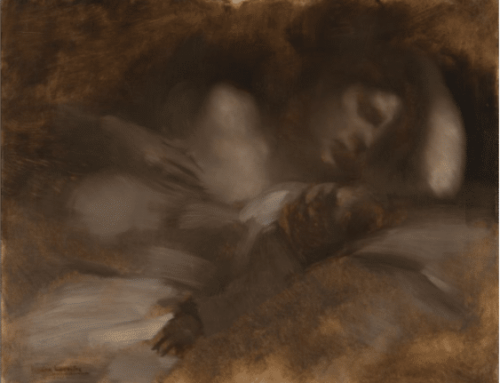Nineteenth-century landscape painting put American art on the map. Before that, America had quality history painters and portraitists, but their work was largely considered derivative of European precedents. American landscape painting set out to change that, and dozens of artists working during the bulk of the century (roughly between 1830 to 1880) made it their mission to depict the landscape of the “new world” in ways that landscape painting itself hadn’t quite been done before.
These painters became known collectively as The Hudson River School (as in the case of the Impressionists, the name was originally intended as an insult, but it stuck). A glorious collection of more than 40 Hudson River School landscape paintings owned by the New York Historical Society is currently on view in an exhibit titled The Poetry of Nature at The New Britain Museum of American Art in Connecticut through May 2022 if you find yourself in that neighborhood.
Nineteenth-century landscape painting put American art on the map. Before that, America had quality history painters and portraitists, but their work was largely considered derivative of European precedents. American landscape painting set out to change that, and dozens of artists working during the bulk of the century (roughly between 1830 to 1880) made it their mission to depict the landscape of the “new world” in ways that landscape painting itself hadn’t quite been done before.
These painters became known collectively as The Hudson River School (as in the case of the Impressionists, the name was originally intended as an insult, but it stuck). A glorious collection of more than 40 Hudson River School landscape paintings owned by the New York Historical Society is currently on view in an exhibit titled The Poetry of Nature at The New Britain Museum of American Art in Connecticut through May 2022 if you find yourself in that neighborhood.
The Poetry of Nature
As The Poetry of Nature tells it, during the first half of the nineteenth-century, the growing number of crowded industrial cities in the East gave rise to an appreciation for pictures of the landscape untouched by man. This closely-knit group of artists, together with like-minded poets and writers, forged a self-consciously American landscape vision and literary voice. Both were grounded in the exploration of the natural world as site of spiritual renewal and as an expression of cultural and national identity.
The Hudson River and the varied scenery along its banks provided the subjects for many of their landscape paintings, but the techniques these painters used can be learned and applied to any locale.
The Hudson River painters sketched outdoors constantly, and they considered their plein air work rather like notes for larger paintings than finished work. From a contemporary plein-air perspective, you could say that what they gained in grand, cinematic depictions of composite scenery they lost in spontaneity, freshness, and immediacy.
It took the revelations of Barbizon and Impressionism to change that thinking. It’s largely the Impressionists and the artists who followed the Hudson River School that laid the groundwork for plein air painting as it’s practiced today.




